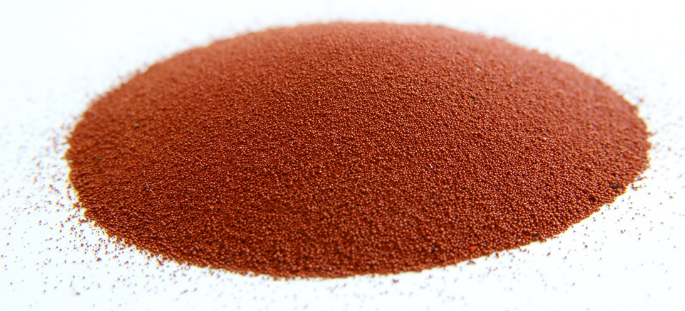> 1 Figure
2
The chemical element copper has two oxide forms: cupric and cuprous oxides, which have completely different colours.
Cupric oxide has the +2 oxidation state of copper, and it has the chemical formula CuO. One copper atom associates one oxygen atom. Copper(II) oxide is its IUPAC name. It occurs as a black solid and is very stable. This compound naturally occurs as the mineral tenorite.
Cuprous oxide has the +1 valence state of copper. Therefore, the IUPAC name of cuprous oxide is copper(I) oxide. With a dark red colour, it has the chemical formula Cu2O. Its structure shows that two copper atoms are in association with one oxygen atom. We can find it in nature as the reddish mineral, cuprite.
In animal nutrition, cupric and cuprous oxides have different biological values: the divalent form is very poorly absorbed and metabolised, while the monovalent form (CoRouge®) shows high bioavailability.


